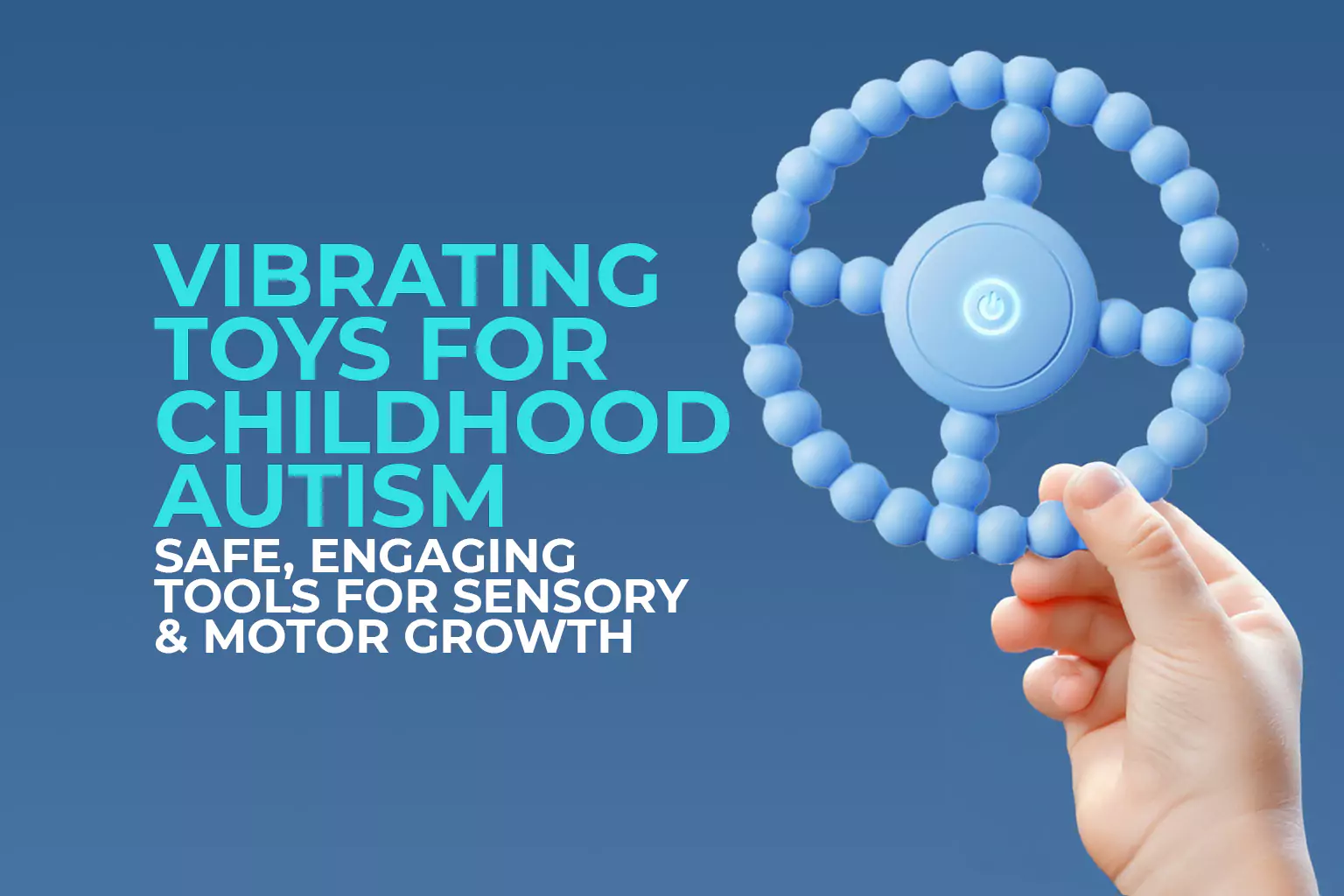
If you’re looking for safe and effective vibrating sensory toys for kids with autism, here are 7 sensory-friendly vibration devices that help with calming, sensory regulation, and motor development:
When noise is overwhelming, vibration can be soothing.
If you’re raising or supporting a child with autism, you already know that the world can shift from calm to chaos in seconds. Sounds get too loud. Spaces feel too bright. And for caregivers, they can often feel drained and exhausted, especially emotionally.
We won’t pretend to know precisely what that’s like. But here’s what we do know: the right tools can make a difference.
Vibrating sensory toys are one such tool. They deliver gentle, targeted input that helps with body awareness, focus, regulation, and even motivation when everything else feels out of reach.
In this guide, we break down exactly how vibration helps, what to look for in a tool, and where to find the best autism-safe options in 2025.
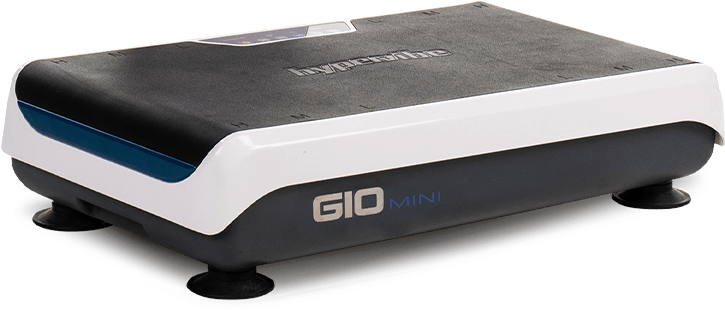




Therapeutic vibration is highly beneficial for children with autism.
This consistent stimulation, which can be provided via vibrating sensory toys, cushions, or portable instruments, promotes both motor development and sensory modulation.
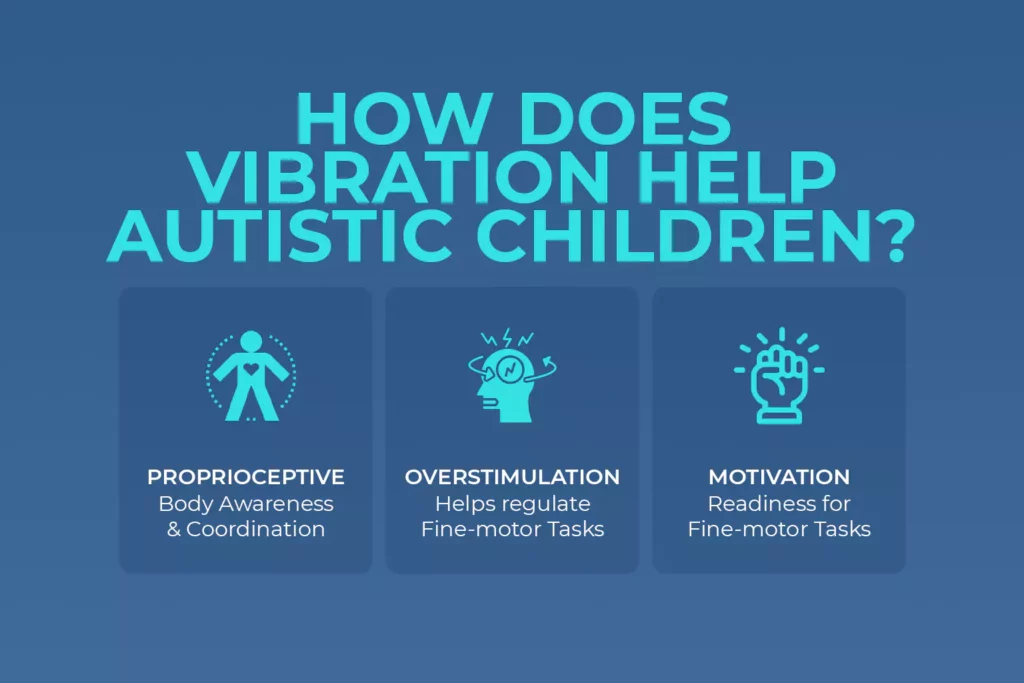
Infographic showing three benefits of vibration therapy for autistic children
Here’s what it can help with:
Many autistic children suffer from body awareness-related issues, which include not knowing how to balance or how much force to use.
These are some of the main functions of the proprioception system. When this internal regulation is compromised, everyday movement is difficult.
Vibrating toys give deep-pressure stimulation that engages nerve receptors called “proprioceptors” in the muscles and joints.
This, over time, improves coordination, posture, and balance.
In fact, according to a review by Europe PMC, proprioceptive training can improve motor outcomes by 45-46%, which is really encouraging.
The motor outcomes are definitely impressive, but their confidence is also boosted because when a child feels more in control of their body, the world gets easier to navigate.
For autistic kids, the world can be loud, bright, fast, and feel like too much.
Vibration at low forces helps to calm the nervous system.
Instead of jumping, squeezing, or stretching, a gentle, low-force vibration can deliver comforting input that helps calm the child’s nervous system.
Picture it like a soothing massage or a steady hug that grounds them when things feel out of control.
Whether it’s a cushion, handheld, or wearable, the rhythmic input helps the body settle, refocus, and feel safe again.
Getting started is often the most challenging part for autistic kids.
Tasks like zipping, writing, or using utensils can feel super overwhelming.
Activating vibrations (between 5–40 Hz) “wakes up” motor pathways, preparing the body for action.
Occupational therapists use this kind of input to improve tone and coordination before a fine-motor task.
You can do the same at home with the right tool.
Instead of resistance or avoidance, you get readiness.
These toys don’t just soothe; they spark motivation and help your child feel ready to engage.
What’s the baseline when selecting vibrating toys? Safety.
Remember, the goal for these toys is to improve the quality of life.
Here’s what to consider:
Vibrating toys come in various shapes, including plushies, handhelds, cushions, and wearables, each designed to meet a different sensory or motor need.
Some work on calming or alerting, while others do both.
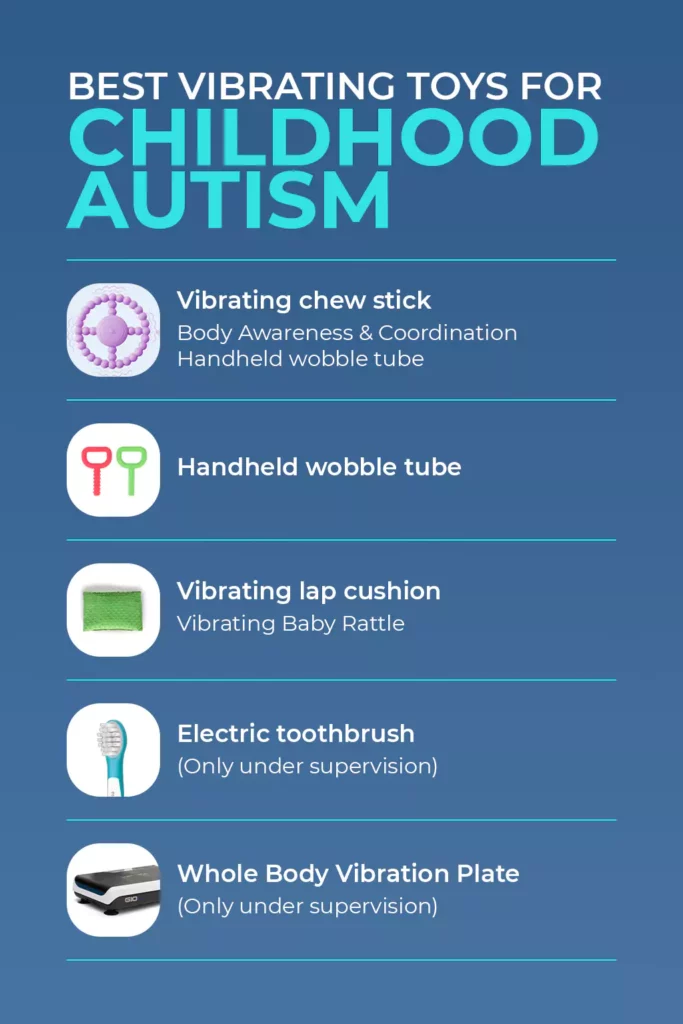
Infographic listing the best vibrating toys for children with autism
Vibrating chew toys provide targeted sensory feedback to the mouth, helping children:
These tools deliver proprioceptive input straight to the lips, cheeks, tongue, and jaw, helping kids “map out” their oral space.
That’s a game-changer for:
Tip:
A clean electric toothbrush (without paste) can serve as a gentle introduction to the sensation of vibration.
Lightly touch the tongue and gums during brushing to build comfort and body awareness.
These comforting companions combine gentle vibration with soft pressure, offering deep sensory input that calms the body and eases the mind, especially at bedtime.
These toys are designed for children who crave deep pressure or experience difficulty with sudden changes.
Whether it’s winding down for sleep or adjusting to a new routine, vibration provides that calming sensory input that’s autism-friendly and non-intrusive.
This alone:
Choose a plush that’s proportionate to your child’s size (not heavier than 10% of their body weight).
For kids under three, always supervise use.
Handheld vibration tubes and sensory wands are excellent tools for preparing large muscle groups for movement, learning, and play.
By delivering targeted vibration to the arms, legs, and trunk, they activate the body’s sensory systems and increase overall body awareness.
They can:
Note:
Most of these devices are USB rechargeable.
They also feature adjustable vibration levels ranging from 5 to 120 Hz, catering to various needs.
These tools can be rolled over larger muscle groups before:
Their portability and easy grip make them highly adaptable for use in home, school, or therapy settings.
When sitting still feels like too much, the correct sensory input, such as lap cushions and seat pads, can ground a child without drawing attention.
Vibrating lap cushions and seat pads offer subtle, low-force vibration that helps reduce restless energy.
Instead of fidgeting, children receive quiet proprioceptive input that supports regulation, body awareness, and attention.
This can make a significant difference in structured settings, especially in classrooms, therapy sessions, or even at mealtimes, where children are expected to remain seated for longer periods.
Note:
Most options are USB-rechargeable, feature near-silent motors (under 60 dBA), and come with washable covers for easy cleaning.
They’re designed to blend in, not distract.
These early-stage vibrating toys are designed for infants and young toddlers who are just beginning to explore sensory input.
Their gentle vibration, paired with soft textures, provides calming stimulation that does not overwhelm developing nervous systems.
Baby-safe rattles support early oral motor development and sensory regulation.
They’re beneficial for:
The best options are:
Safety always comes first.
These toys should:
Tip:
Always supervise use and choose age-appropriate toys with verified safety certifications.
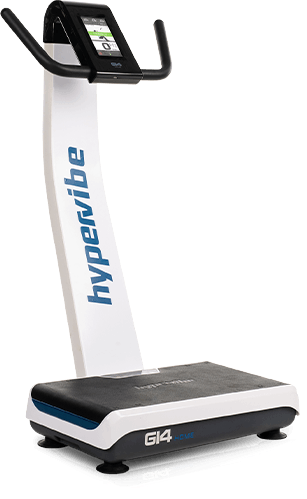




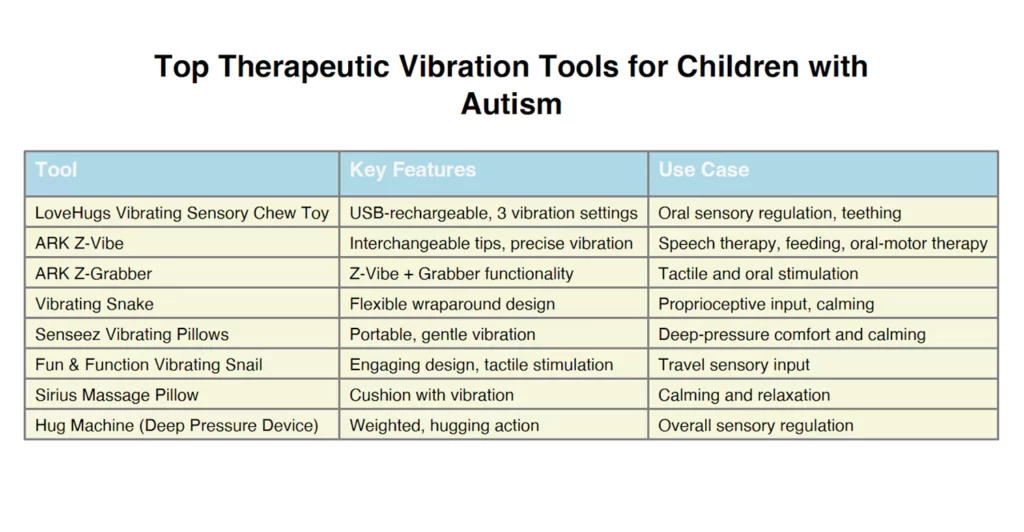
Table of therapeutic vibration tools for children with autism, listing tool names, features, and sensory use cases like calming, oral stimulation, and sensory regulation
These are some vibrating toys for children with autism based on an online search for brands that work.
| Tool | Key Features | Use Case |
|---|---|---|
| LoveHugs Vibrating Sensory Chew Toy | USB-rechargeable, 3 vibration settings | Oral sensory regulation, teething |
| ARK Z-Vibe | Interchangeable tips, precise vibration | Speech therapy, feeding, oral-motor therapy |
| ARK Z-Grabber | Z-Vibe + Grabber functionality | Tactile and oral stimulation |
| Vibrating Snake | Flexible wraparound design | Proprioceptive input, calming |
| Senseez Vibrating Pillows | Portable, gentle vibration | Deep-pressure comfort and calming |
| Fun & Function Vibrating Snail | Engaging design, tactile stimulation | Travel sensory input |
| Sirius Massage Pillow | Cushion with vibration | Calming and relaxation |
| Hug Machine (Deep Pressure Device) | Weighted, hugging action | Overall sensory regulation |
Introducing a vibrating toy? Great.
But like any sensory tool, how you use it matters just as much as which one you choose.
Going slow, observing closely, and following your child’s cues will make the experience not just safe but supportive.
Here’s a step-by-step routine:
Tip: Create a simple note or sensory log where you jot down settings they loved, what felt like too much, and how long they used it.
Vibrating toys and Whole Body Vibration (WBV) plates each offer very different benefits. While one offers focused support, the other brings full-body stimulation.
Yes, both can boost sensory and motor development, but knowing when (and how) to level up safely matters.
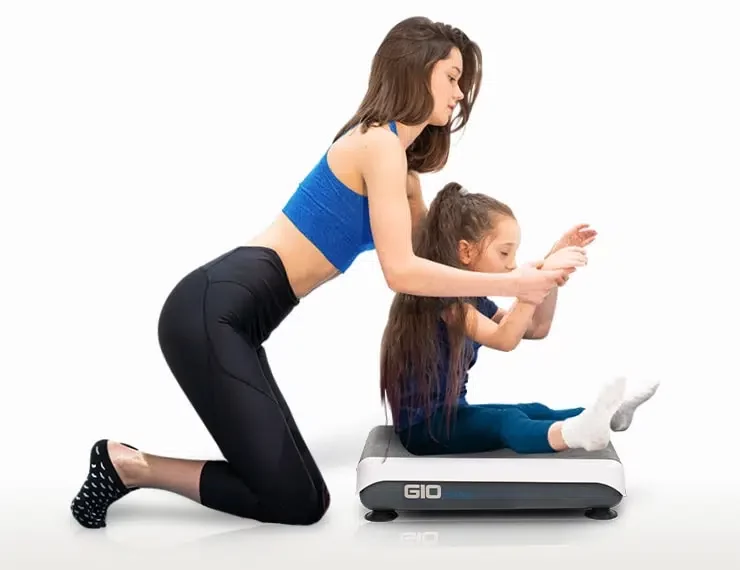
Child on a hypervibe whole body vibration platform
They are simple, portable, and made for specific spots like hands, feet, or the mouth.
Chewies, handheld wands, and even lap pads fall under this category.
They are excellent for:
WBV plates are on another level! Why do we say this? Because they go beyond specific body parts.
For WBV plates, you might want to scale up if:
Vibration Therapy (Whole Body Vibration (WBV)) is a type of physical activity that uses mechanical oscillations as a means of stimulating the body.
The vibrations can stimulate the muscles more compared to conventional exercise.
As a result of this, along with increased circulation (and relaxation), the body experiences numerous health benefits, both in physiological and psychological aspects.
According to scientific data, Whole Body Vibration has been linked to denser bones, stronger muscles, improved blood circulation, accelerated physical recovery, reduced overall body weight, and decreased stress levels, among others.
Furthermore, Vibration Therapy has been found helpful in alleviating the symptoms of various neurological conditions, such as epilepsy, Alzheimer’s disease, Parkinson’s disease, and autism.
For instance, it has been established that Vibration Therapy helps reduce the repetitive hand tremor in people suffering from Parkinson’s disease and increases the bone mineral density in children with impaired mobility.
Additionally, scientists have discovered a positive effect of Vibration Therapy on autism.
When it comes to vibrations and their positive effects on human health, there are 2 main types, namely activatory and excitatory.
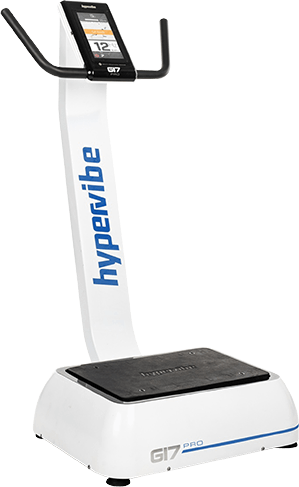




As per evidence from several scientific studies, such as this one, autism Vibration Therapy has been found to be well received by kids with autism.
The therapeutic intervention has shown positive results for reducing stereotypy in children and for increasing tactile perception in adults.
Scientists have tested various frequency levels, but the most beneficial ones turned out to be between the ranges of 5 – 40 Hz.
This way the machine delivers somatosensory stimuli directly to the target area, helping children with autism improve their sensations and relax.

female child standing on a vibration plate and smiling
How WBV can support:
A licensed Occupational Therapist (OT) should be involved in the process.
While specific protocols must be set by a professional, here’s a general guide to typical parameters used with children on the autism spectrum.
|
Parameter |
Typical Range/Consideration for WBV Plates |
Notes |
|
Frequency |
5-30 Hz |
– Lower frequencies (e.g., 5-20 Hz) for calming/sensory input. – Higher (e.g., 20-30 Hz) for muscle activation. – Rarely exceed 30 Hz for children. |
|
Amplitude |
Low (1-4 mm peak-to-peak displacement) |
Low amplitude is generally preferred for therapeutic benefits and comfort in children. |
|
Duration |
10-20 minutes per session |
Often broken into more minor bouts (e.g., 3-minute bouts with rest periods). |
|
Sessions |
2 to 3 sessions weekly are enough |
Focus on consistency. |
|
Positioning |
Perform standing exercises (with support), sitting exercises, or specific exercises as guided. |
– Proper body alignment = better results – Proper body alignment = less discomfort. |
|
Supervision |
Always work with an OT. |
Follow professional guidance. |
Before answering this question, it is worth mentioning that every person with autism experiences unique sensory, communication, and behavioral challenges.
Furthermore, scientists have observed that autistic individuals respond to Vibration Therapy differently, meaning that some might find it less enjoyable.
Therefore, every kid or adult with autism should receive individualized treatment, including Vibration Therapy.
Overall, Vibration Therapy has been found to positively affect autistic people, but some might find it less appealing than others.
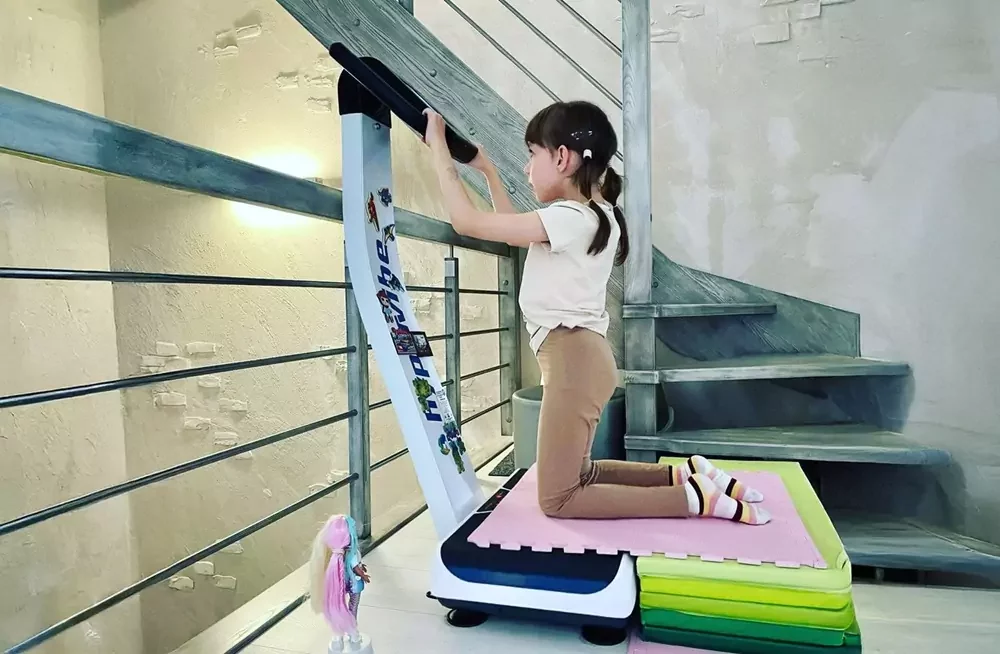
Child kneeling on a vibration plate with a pink mat on it
While the tests were carried out among children with CP, clinicians report that the condition shares some common motor function features with autism.
Therefore, they have concluded that Vibration Therapy could be an effective intervention for relieving the symptoms of autistic individuals too.
Yes,
but only when they’re made for babies and used with extra care.
Go for gentle vibration settings, soft textures like food-grade silicone, sealed battery covers, and auto shut-off features.
They do.
That steady hum literally calms the nervous system, making bedtime feel less chaotic.
Start with 1 to 2 minutes, then adjust the time according to your child’s reaction.
Yes.
If the vibration settings are too high and/or the child uses it for too long or too soon, it can overstimulate them.
Watch for zoning out, pulling away, or sudden meltdowns.
That’s your sign to pause or scale back.
This conversation extends beyond toys—it is about equipping children with tools that help them navigate the world with greater ease and comfort.
For many children on the autism spectrum, the right sensory input can support emotional regulation, encourage body awareness,
and create a sense of safety in environments that might otherwise feel overwhelming.
We’d love to walk that journey with you.
Subscribe to the Hypervibe newsletter for insights, Vibration Therapy.
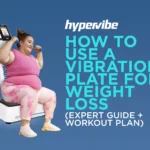
Here’s how we use a vibration plate for weight loss...
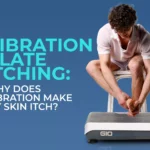
Many people, especially beginners, notice an itchy or tingling “pins-and-needles”...

Yes, Vibration Plates or Whole Body Vibration (WBV) platforms, promote...

The lymphatic system, also called the lymphoid system, is an...
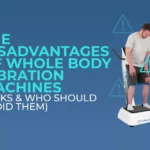
Are vibration machines bad for you? Yes, if used incorrectly....